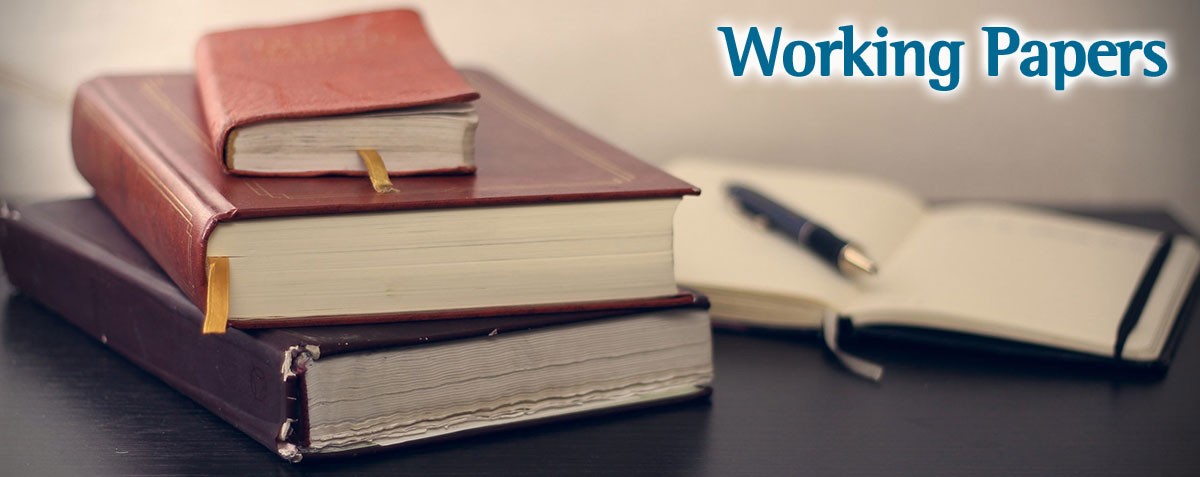Authors
Philip Swan

About the author
From 2011 to 2019 Philip Swan worked as a minority language development advisor to the Namblong (Nimboran) people, who live in the Grime Valley in the Indonesian province of Papua. He helped them develop an orthography, along with a reading and writing lesson book and picture dictionary. He also
helped Kemtuik, Mlap and Namblong speakers translate, publish and record Bible passages and other texts, craft and record songs, and prepare texts, recordings and videos for distribution via digital media. In 2020 Philip and his family relocated to Melbourne, and he now lectures at SILA whilst continuing to support Papuan language teams remotely.
The following paper is an updated version of Philip’s 2021 Masters’ thesis, exploring how different levels of community participation in orthography development affected the quality and use of three different Namblong orthographies.
Papers
Mark my words! Writing Namblong, according to Namblong, by Namblong, for Namblong
This ‘orthobiography’ describes the development and implementation of three orthographies for the Namblong people of Papua, Indonesia; one by an external linguist, one by a Namblong committee, and one by collaboration between a linguist, a local committee, and the wider Namblong community.
By evaluating the quality of each orthography according to its appeal, acceptance, accuracy, accessibility, and application, as well as the community’s agency and agreement in its development, and the perceived accord between Namblong culture and the different methods of orthography
development, this thesis critiques and qualifies, substantiates and expands the hypothesis that participatory methods of orthography development result in orthographies that are more widely accepted and used than orthographies developed using non-participatory methods.
By identifying specific advantages and disadvantages effected by different models of orthography development, it is hoped that these findings will lend greater potential for success to communities engaging in written language development, and that further research in this direction will lead to an
eventual theory of orthography design.
Liz Billard, PhD (1945–2023)
About the author
 Liz Billard’s PhD (2000) from Adelaide University, South Australia relates to education and literacy in China, and followed wide experience in classroom teaching in Adelaide over several decades.
Liz Billard’s PhD (2000) from Adelaide University, South Australia relates to education and literacy in China, and followed wide experience in classroom teaching in Adelaide over several decades.
From 2002 she developed and implemented a model of contextualised bilingual education preschool curriculum for the remote minority Bai people of SW China. Papers based upon that work have been presented in a number of academic venues and government bodies in China on this subject, including universities in Kunming and Dali and the First ‘Zero Barrier’ International Bilingual Education Symposium in 2011 held in Jinhong, Xishuangbanna, Yunnan Province, PRChina.
Papers
Language learning in minority China
The following abstracts outline a set of three papers discussing how children with strong minority language backgrounds and living in rural villages in the PRChina may be better prepared for their Chinese education by beginning their education in their own language during preschool. Paper one explores the importance of developing and extending these children’s oral language skills in both their own minority language and Chinese. Paper two discusses establishing reading and writing skills and strategies which only become available when a language is already familiar. Paper three investigates what has already been done in Canada and Italy and shows how this experience may benefit minority children in China. These papers also give examples from a program already established amongst the Bai minority in Jianchuan County, south western China, and present some outcomes.
Abstract 1
Language learning in minority China: oral language
The first paper concerns minority first languages in the PRChina and the acquisition of the national language. It discusses the importance of oral language development in both languages, beginning with the minority language which is often the only language students know when they start school. The paper gives strong reasons for extending the student’s ability to think and use their own language well, because these skills affect all future learning. Also important is establishing an oral foundation in the national language before learning to read and write that language. Even with only one year of oral language teaching in Chinese, students are more likely to have a better sense of the language’s structure, its sound and rhythm while also acquiring some useful vocabulary.
Click to download the complete PDF (439KB)
Abstract 2
Language learning in minority China: reading & writing
The second paper is mainly concerned with the skills and strategies used when reading and writing a familiar language. Research shows that oral language proficiency levels in a second language greatly affect the ability to use such reading and writing strategies. Research also shows that students should be taught how to use these reading and writing strategies so that they are able to recognize and use ‘chunks’ of language rather than relying on translation. Finally, this paper discusses recent developments in neuroscience which may help to improve the teaching of these reading and writing strategies to students, even when the scripts of the first language and the target language are different.
Click to download the complete PDF (374KB)
Abstract 3
Language learning in minority China: across the curriculum
The third paper discusses the role non-language subjects can play in second language learning. It looks at immersion programs in Canada, and a different approach used in a European Union country such as Italy, to see what may be learned and applied to minority education in China. The paper also shows how to link subject specific language (e.g. grade one mathematics) in the target language (Chinese) to concepts already learned in preschool in their own language. Finally, it presents some interesting outcomes as Shilong Village Bai/Chinese bilingual preschool program graduates have passed through primary school.
The educational foundations of the Bai preschool program
Not many experimental bilingual education (BE) projects in China begin by teaching minority students to become literate in their own language before beginning their Chinese education. This paper, “The educational foundations of the Bai preschool program” (author: Dr Liz Billard PhD), is primarily concerned with the educational approach used in such a program for pre-schoolers in a remote mountain village in southwest China. The curriculum is designed to teach Bai children aged five and six years to read and write in their own language before beginning to learn oral Chinese in the second year. What is different about this preschool program from others in the region is the use of mother tongue literacy and active learning methods across all subjects. The results of a survey of villagers’ attitudes, educational experiences and economic circumstances informed the decision about the educational approach to be used and the support needed to enable village children to participate. The project aims to provide evidence that this type of BE will benefit minority children in rural villages across China who do not do well at school. This project is in its seventh year of operation and is already attracting wide interest from government officials and academics. Results so far are also very encouraging.
Click to download the complete PDF (269KB)
Creating a new song genre
This paper describes the process by which new songs using the Bai language and Bai musical style were composed and are being used in the classroom for educational purposes. It shows what was involved in getting to know musicians, recording, transcribing and analysing Bai songs so that meaningful discussions with musicians about musical structure could take place. The ultimate goal of this discussion was to encourage local musicians to compose new songs which could be used to aid learning in the classroom as well as to collect traditional children’s songs which could also be used when appropriate. The paper concludes with a description of the response by teachers, students and parents following the introduction of these songs and the educational benefits that occurred.
Click to download the complete PDF (3.2MB)

